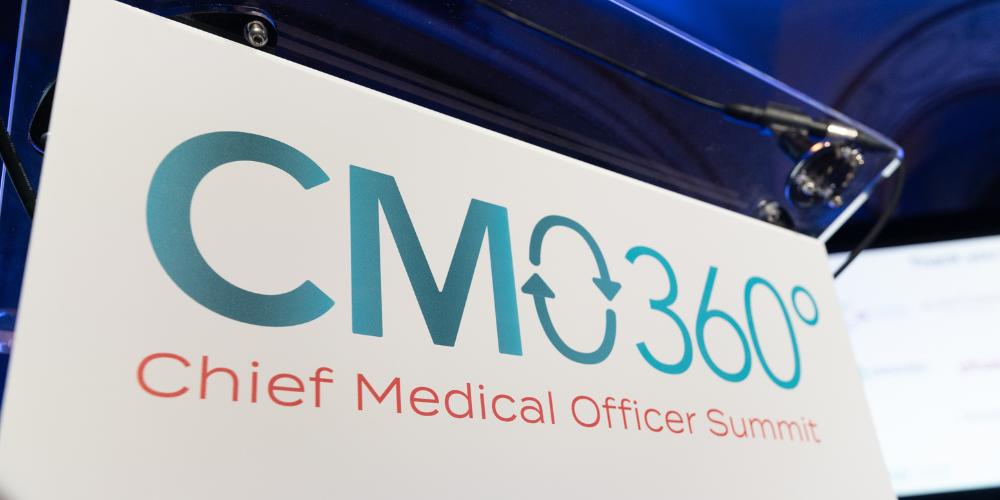
Nerissa Kreher, MD, MBA, is the CMO of Entrada Therapeutics.
Can you talk about Entrada Therapeutics’ IPO story?
I joined Entrada in December of 2020. The company was still private. Over the course of 2021, the company closed a series B raise and then closed an IPO in November of 2021. It’s a typical progression, and one you start to understand, after you have done this a couple of times. You participate in a series B raise or a “crossover round” and then work towards an initial public offering. The other progression you see before companies begin the IPO process is in hiring as it’s important to have the senior leadership, or executive team, in place.
We did about 40 testing the water (TTW) meetings and probably had a similar number of meetings during the roadshow. We were in the throes of a very hot IPO market, so we actually cut off our IPO meetings on Wednesday, two days before the planned IPO. When I participated in the IPO of AVROBIO – to compare and contrast – we held roadshow meetings through Thursday. AVROBIO also had a strong IPO; it was just a different market.
Speaking of comparing and contrasting, how has the IPO process been different pre- to post-COVID?
COVID made a big difference. The first IPO I participated in was in person. It was a whirlwind week of meetings in New York, Chicago, California and Boston. We were literally ferried from meeting to meeting. It was back-to-back, face-to-face, meetings from seven or eight in the morning through the evening. With COVID, our IPO was virtual. I did it all sitting at my desk in my own home.
I actually found that the in-person process was less fatiguing. In person, there was some downtime to decompress as a team as we traveled from meeting to meeting. We could discuss what went well, what we could do differently, and review questions that we were repeatedly asked. Whereas virtually, the meetings were back-to-back; thus, there was no opportunity for us to look at what was working well and what might not be working well in real time. We still got together at the end of the day to debrief and plan, but I found that the in-person process gave us a bit of a break from meeting to meeting for that important IPO team building time.
"I would encourage CMOs to learn about the soft skills needed for an IPO from investor relations colleagues and their CFO. Ask questions. They can teach you the process you are getting into, what to expect, and how to approach different investor phenotypes."
Outside of endurance, are there different skills needed for a virtual IPO process versus an in-person IPO process?
I don’t necessarily think so. Investors are looking for a CMO’s clinical and regulatory knowledge. Do you know the disease? Do you have the clinical and regulatory strategy in place? That is one piece.
They are also looking for the softer skills. How does the leadership team interact? Is there chemistry between the team? Can that team of people, together, lead the company to success? If you are sitting there in person with the team, that body language is clearer to an investor. On Zoom, we were all in different places, so it is more difficult for an investor to evaluate.
What knowledge do CMOs need in order to best support a successful IPO and where can they learn those skills?
As I mentioned earlier, the first important concept is your clinical and regulatory knowledge. You really should have that coming into your CMO role. That is why you have been hired. That is the easy piece for the IPO process. You know clinical development, regulatory strategy and have the background disease knowledge.
I would encourage CMOs to learn about the soft skills needed for an IPO from investor relations colleagues and their CFO. Ask questions. They can teach you the process you are getting into, what to expect, and how to approach different investor phenotypes. There are some investors who are very heavy into the biotech sector and are going to be more technical. There are other investors who are more general, and their questions won’t be as technical.
From a process perspective, the CMO and other team members also need to understand that the CEO is the quarterback. It’s important to ensure there is a cohesiveness to the team; letting your CEO point to the person they want to answer the question. Those are the skills that you partly learn along the way, but you can also get coaching from team members who have done IPOs before. I point back to my IR colleagues and CFO because typically they are the people who have the IPO experience.
What level of sophistication should CMOs aim for when speaking with investors?
In both my AVROBIO and Entrada experience, when it was the sector investors, I was sitting across the table from PhDs, MDs and MD, PhDs. Much of the conversation, especially for preclinical companies like Entrada, was spent discussing the science. I don’t think I was ever in a situation of feeling like I was bringing my message down scientifically unless I was in a situation of working with a more generalist investor.
To that point, one of the things you should do in preparation is ask your IR colleagues for intel on your list of investors. Who are they? What are their backgrounds? Based on that you can consider the type of questions they will ask; perhaps related to their PhD training or their MD training.
How is the role of a CMO in the IPO process different for a clinical stage company versus a preclinical company?
For a clinical stage company, the CMO is going to get more questions. There will be much more focus on clinical development strategy and clinical data. When you are in a preclinical company, many of the questions are going to go to your CSO or Chief Scientific Officer. What they want to hear from the CMO is that she is able to translate the science. That is where you will get your questions. What do you think the safety profile will look like? What are you thinking about for efficacy endpoints? What is your clinical and regulatory strategy?
How does the CMO role change as you transition from that pre-IPO to during the IPO to post-IPO and how do you manage those changes?
For the whole team, the change is really about the rules we have to follow as a public company. There are SEC rules about sharing data and what is considered publicly available information. So, you need to exercise restraint in what you share because there are legal ramifications. Also, there is a lot more focus on stock price as a publicly available measure of performance.
Are there any personal implications of being the CMO in a publicly traded company that CMOs should be aware of?
The biggest one is that as an executive of a public company; there are disclosures that impact you in your SEC documents. For example, your salary may become publicly available. Your activities like selling or buying stock may become publicly available. You have to bring some of your private life out into the public domain.
Do you have any advice for other CMOs on how to navigate the experience of external communication through press releases?
Getting back to the regulatory disclosures we have to make, there is a strategy around how the company wants to communicate scientific data. Some companies may share information through scientific conferences and press releases while others send out press releases that may not be aligned with conferences. It is really about focusing on the critical information that has to be in the press release. For example, if you are going to present all of the data at a scientific conference, the press release should focus on the most important data but leaving out what is a better fit to explain at the conference. There is a lot of planning involved.
People may not appreciate that once you are a public company, the lead times for making sure that you have the communication strategies in place are critical. If, for example, someone at the last minute decides we are going to submit an abstract to a conference and they decide to submit data that are not public information yet, it can cause difficulty for the whole company from a regulatory perspective. It’s critical that the communication strategy is planned in advance when you are a public company.
"Be curious and learn as much as possible about the aspects of the IPO process that are not your functional responsibility. Learning about the overall IPO process will make you better at your functional responsibility."
About a year ago, you joined the board of directors of Rezolute Bio, Inc. How has being on a board of directors affected the way that you lead as a CMO?
Being on a board of directors has really helped elevate me in my role as CMO. I am now able to see things from my board’s perspective. Anytime I am thinking about a discussion with a board member, or presenting at a board of directors meeting, I am putting myself in the shoes of that board director. Obviously, you try to do that even if you are not on a board but it is more tangible and I am better able to understand what they are thinking.
Being on a BOD has helped me lead my team to help them start to consider what questions the board may ask and consider answering those questions before they come up. I am better able to prompt my team to think on their feet and anticipate questions.
Do you have any other words of wisdom to the CMO community about this process?
My words of wisdom would be to try to enjoy the process, trust in your knowledge and why you were hired as the CMO. And at the same time, be curious and learn as much as possible about the aspects of the IPO process that are not your functional responsibility. Learning about the overall IPO process will make you better at your functional responsibility.








